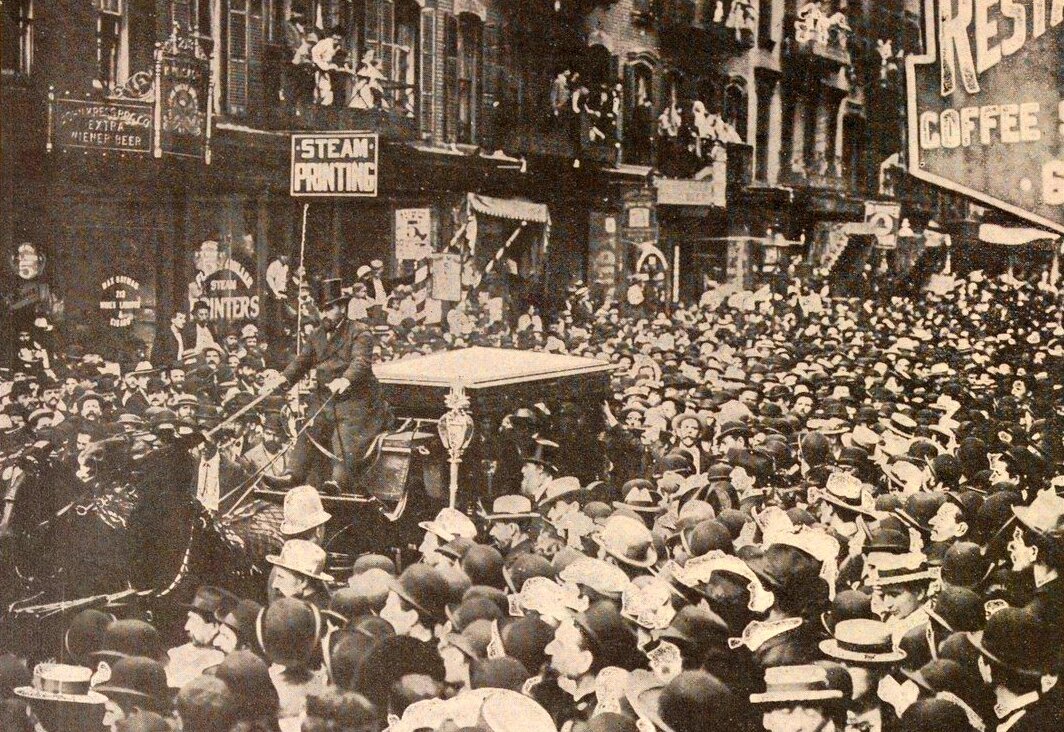Department Store Lore: A History
Okay, I’ll admit it: I love to shop, especially in tony department stores like Bergdorf Goodman, that Fifth Avenue emporium of luxe whose 100th anniversary is right around the corner. In search of visual pleasure, not to mention the joys of ownership, I delight in making my way past vitrine after vitrine, one more glorious than the next. For me, taking in everything that department stores have to offer is not unlike visiting a museum in which all manner of treasures are on display, except that in department stores I get to touch, try on, take home — and return.
I am hardly the first person, of course, to compare these large-scale commercial establishments to museums, both of which came of age in the United States at the turn of the last century. The first generation or two of department store owners, for their part, drew explicitly on a museological paradigm in their attempts to wean away customers from their traditional reliance on Main Street with its array of small shops. Building grand, block-long edifices that bore more than a passing resemblance to European palaces of art, they placed a premium on what one promotional pamphlet described as “broad, airy spaces, [a] restful color scheme and [a] pervasive atmosphere of refinement and dignity.” Some imaginative department store owners like John Wanamaker went further still, actually mounting art exhibitions in the sparkling, Tiffany-endowed rotunda of his eponymous Philadelphia store.
In other instances, department store entrepreneurs, keenly sensitive to the aesthetics of display, invested a great deal in the art of window dressing, hoping to make shopping less of a task and more of a pleasure. The goal of the modern-day department store, Benjamin Altman explained, is to “render shopping as agreeable as possible by reducing to a minimum the labor and fatigue involved.” In this, Altman and his competitors succeeded wildly, thanks in no small measure to their use of large plate- glass windows, then a rarity, and the latest technology, from elevators and escalators to speedy, motorized delivery service — all of which placed desire well within reach.
Department stores also placed the metropolis within reach for America’s women, who now were actively encouraged to make their way downtown to shop, dine and relax in these emporia of refinement and abundance. Those sections of the city that boasted a cluster of department stores — known commonly as the “Ladies’ Mile” — at once welcomed and legitimated the presence of female shoppers, a testament to the interplay between emancipation and consumerism.
Of all the characteristics of the modern department store, perhaps none was quite as noteworthy as the background of many of its founders. To put it less obliquely, the history of the American department store was inextricably bound up with the history of America’s Jews, many of them German Jewish immigrants or their children. Within a remarkably compact amount of time, they turned from peddling to owning dry-goods stores, which, in the wake of the Civil War, they then transformed into lordly department stores in which virtually everything, from underwear to outerwear, was available under one heavily ornamented roof. Abraham & Strauss, Neiman Marcus, I. Magnin, Gimbel’s, Hochschild Kohn, Hecht’s, Bloomingdale’s, Filene’s and my beloved Bergdorf Goodman all bear witness to the entrepreneurial zeal, savvy and success of an earlier generation of American Jews.
For all its triumphs, though, the history of the American department store was not without its underside. In southern cities, these institutions often were the cause of a bitter divide between white and black Americans, their sales counters the site of racial insult. For starters, discrimination in hiring was commonplace: Black employees typically worked behind the scenes, not on the selling floor. More troubling still, as a recent exhibition at the Jewish Museum of Maryland makes clear in graphic and unsettling detail, was the policy of many Jewish-owned department stores in Baltimore to prohibit black customers from dining in their restaurants, returning purchases, and trying on intimate apparel and hats, a policy that grew out of a widely held belief that blacks were dirty and their hair “objectionable to the point of being unsanitary.”
In Baltimore, things came to a head in 1960 when students from Morgan State College staged a sit-in at the eateries of a number of downtown department stores. After weeks of protest, during which local church groups, women’s organizations and the National Association for the Advancement of Colored People threw their weight behind the collegiate protestors, department store owners reluctantly gave in to mounting public pressure and desegregated their facilities, a move welcomed in some quarters and pilloried in others.
Not a happy story, by any means, these long-simmering instances of racial conflict attest to the important role that department stores, those fulcrums of aspiration, played in the modern era. When seen from that perspective, shopping comes pretty close to being as much an exercise of civic duty, even a right, as a bid for pleasure.
A message from our CEO & publisher Rachel Fishman Feddersen

I hope you appreciated this article. Before you go, I’d like to ask you to please support the Forward’s award-winning, nonprofit journalism during this critical time.
We’ve set a goal to raise $260,000 by December 31. That’s an ambitious goal, but one that will give us the resources we need to invest in the high quality news, opinion, analysis and cultural coverage that isn’t available anywhere else.
If you feel inspired to make an impact, now is the time to give something back. Join us as a member at your most generous level.
— Rachel Fishman Feddersen, Publisher and CEO





















